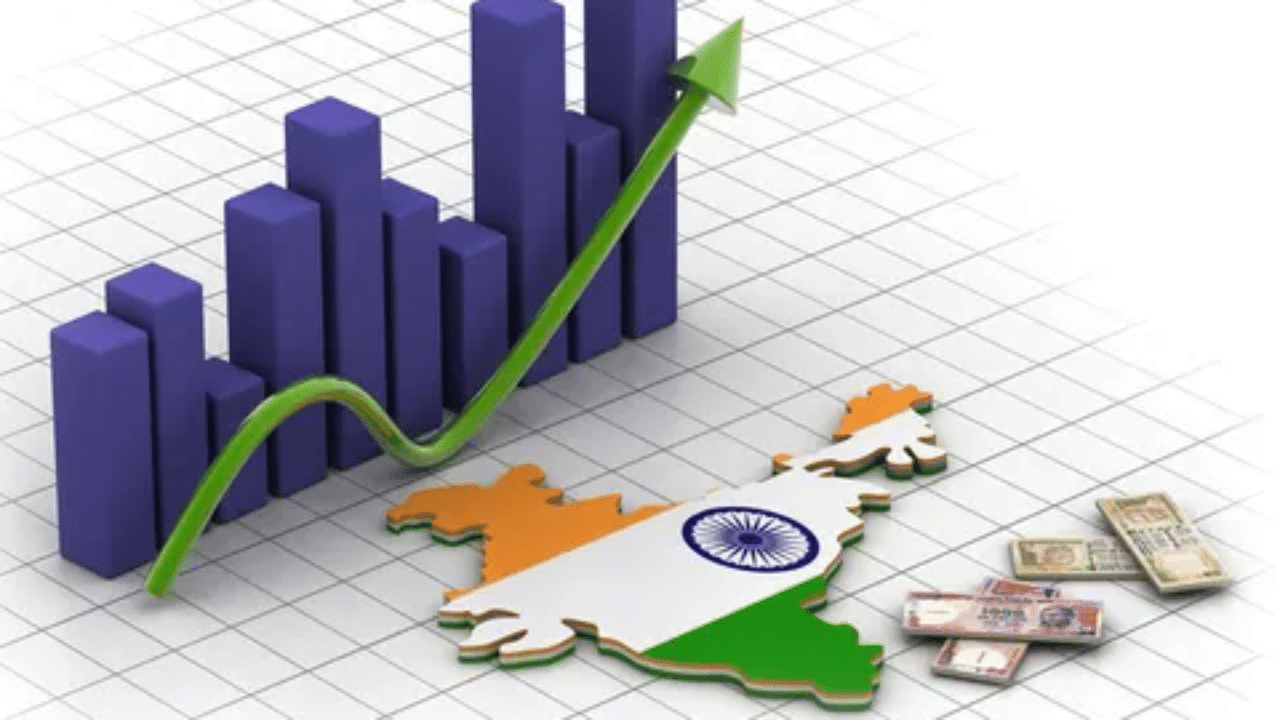In recent days, there have been continuous developments regarding the economic relations between India and the United States. On one hand, U.S. President Donald Trump has been making frequent statements about the Indian economy, while on the other hand, the issue is also being turned into a political matter within the country. Among these, the most talked-about remark by the U.S. President was the one in which he described India’s economy as ‘dead’.
Now the question arises – can a country like India, which is one of the world’s oldest civilizations, ever have a ‘dead’ economy? If that were the case, this civilization would have vanished long ago. But that has never happened. In reality, the U.S. government fails to realize that the standards they are referring to may apply to Western or European countries, but not to India. For India, such a situation is simply not possible.
There are many reasons behind this, and if we observe the period from ancient history to the present situation, it becomes evident that India’s economy has neither ever been dead in the past, nor will it be in the future, and even at present, it is under secure leadership.
Rishi Manu is recognized as the earliest economist of India. According to Western historians, his work Manusmriti is believed to have been composed around the 2nd century BCE, whereas Indian tradition places its composition in the 6th century BCE. Even before this, in the same lineage, the name of Acharya Shukra also finds mention. During the time of the Mahabharata, Bhishma Pitamah was regarded as an authority on economic matters. Thereafter, the names of Acharya Chanakya (Kautilya) and Acharya Kamandaka emerge prominently.
The remarkable fact is that all these names belong to the pre-Christian era. In other words, at that time, the U.S. economy had no existence whatsoever. In the United States, the beginnings of an economy are considered to have emerged around the 17th–18th century. Although U.S. has no clearly defined founder of economics, if we consider their first Secretary of the Treasury, Alexander Hamilton, he served in this position from 1789 to 1795, during the tenure of the first U.S. President, George Washington. Speaking of prominent Western economists, the names of Adam Smith, Malthus, David Ricardo, Sismondi, Karl Marx, and John Maynard Keynes stand out. All of these economists lived within roughly the last 300 years.
The Indian economy has been vibrant and strong since ancient times. From the era of Rishi Manu itself, the importance of Artha (wealth and economic well-being) in life was well understood. Our ancient economic thought not only contains references to taxation systems but also clearly specifies from whom and in what proportion taxes should be levied. The tradition of currency circulation in India is also very ancient, serving as evidence of our rich and well-developed economic philosophy.
A compelling example of the greatness of Indian civilization is found in the Mahabharata. When Bhishma Pitamah lay on his bed of arrows, Bhagwan Shri Krishna sent Maharaja Yudhishthira to him so that he might receive profound wisdom on life, governance, and dharma. On that occasion, Bhishma specifically emphasized that after calamities such as war, it is essential for a kingdom to be economically strong in order to restore stability and prosperity.
To some, this may appear to be merely the emotional side of history; however, it is an indisputable fact that centuries ago we had already established a robust framework for employment, agriculture, self-reliance, trade, and economic management. This is precisely why even today, global crises do not significantly affect the Indian economic system.
Now, speaking of the present scenario, since 1947, the United States has experienced nearly 124 months of recession, whereas India too has faced periods of slowdown, but not as frequently as the U.S. In the early years of independence, we encountered a decline in agricultural production due to famine and drought; however, prompt measures were taken to overcome these challenges, and the nation succeeded in becoming self-reliant.
Even in 1991, when our economy was going through a difficult phase, it had no significant impact on the daily life and activities of our common people. We did not fade from the global stage then either, and during that very period, we also emerged as a nuclear power.
Today, with a GDP of 4.19 trillion U.S. dollars, India is the world’s fourth-largest economy. It has taken us only 75 years to reach this level, whereas the United States took nearly 209 years to attain a similar level in 1984–85. From a hypothetical perspective, had we not endured the inhumane exploitation and plunder of British colonialism, and had we been afforded the same time and resources as the United States, it is quite possible that today we would have been ahead of America.
Not only that, in 2014, when our economy was at around the 2 trillion U.S. dollar mark, we nearly doubled our growth rate over the next decade. This is an extraordinary and unparalleled achievement. Looking at the data from just the past decade, apart from China, no other nation has achieved such rapid progress. This is why, by 2028, India will be established as the world’s third-largest economy.
In fact, we must understand that India is a resilient nation, which, from ancient times to the present, has keenly recognized its needs and made timely changes accordingly. This continuity of India’s economic journey was such that, although it slowed during the era of European imperialism, it could never be rendered dead.
